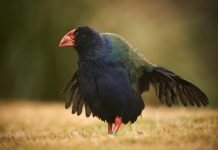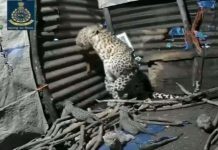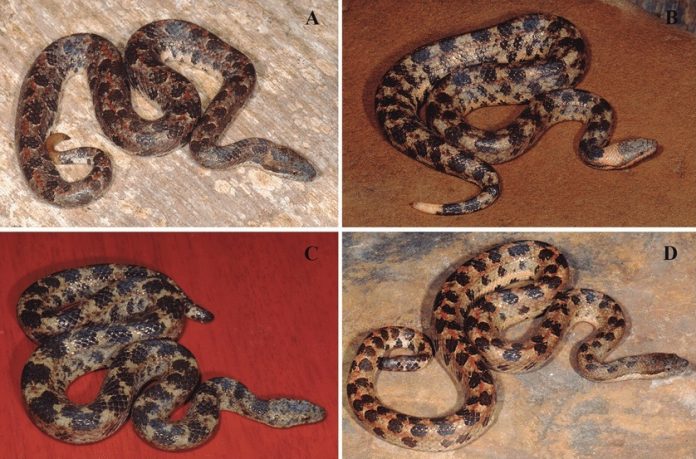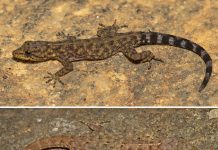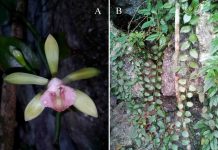Tropidophis steinleini sp. nov. is described from the eastern region of Cuba, raising the currently described number of species to 17 in this archipelago. Cuba has the highest diversity of snakes in the genus Tropidophis, representing 53 % of all the known species, including its type species, T. melanurus, and some of the oldest named species [T. pardalis and T. maculatus]. The new species is most closely related to T. wrighti, T. spiritus and T. morenoi. The extant genus Tropidophis includes 32 known species distributed throughout the Caribbean and South American continent. Most of its diversity is concentrated in the Greater Antilles and the Bahamas, and only five species are found on the continent.
Ecological partitioning suggests the presence of clear morphological trends in terrestrial and arboreal species. Only a few species are widespread and relatively common. (e.g., T. melanurus and T. perdalis) Many are geographically restricted or rare. Up to six species occur sympatrically in several localities, representing the largest assembly of these snakes throughout the distribution of the genus (e.g., four species at Soroa, Western Cuba: T. maculatus, T. melanurus, T. pardalis, and T. feicki).
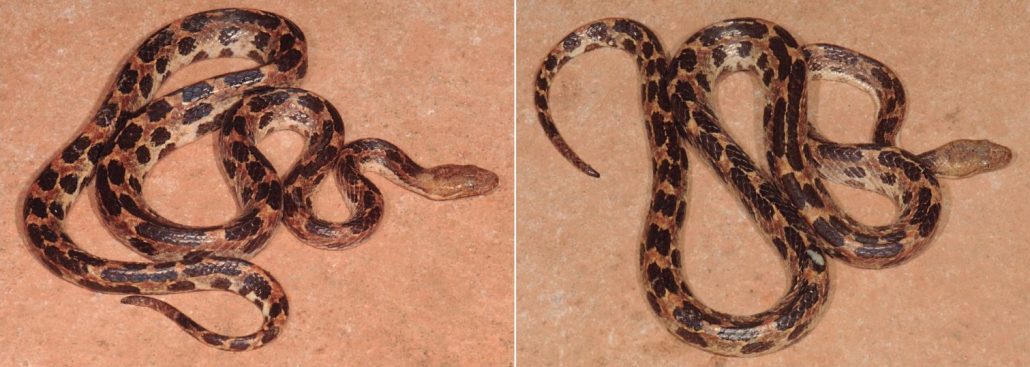
Tropidophis steinleini sp. nov is similar to other snakes in the genus and is relatively rare and difficult to collect. For this reason, many Tropidophis are often described by a single specimen (e.g., T. celiae, T. hendersoni, and T. spiritus); however, what was originally described only from their holotype and later by additional material, presumably stimulated by their original description.
In this research paper, Luis M. Díazand and Antonio Cádiz mentioned that Stull (1928), Schwartz and Marsh (1960), and Hedges (2002) provided extensive systematic reviews of the Cuban Tropidophis species. In the latest review of the genus, Hedges grouped species within a new taxonomy scheme (five groups) and mentioned that phylogenetic analysis based on DNA sequences supported his classification along with morphological characters.
Following IUCN criteria, 11 are classified in the highest categories of threats (Endangered), Among the 16 Cuban species of Tropidophis. Deserving special attention by local authorities, only two species (Tropidophis hardyi and T. hendersoni) appear to be the outlying areas covered by the Cuban National Protected Areas (SNAP).
Based on molecular data, and classified them within three species groups according to the obtained tree topology, the researchers discuss the phylogenetic relationships of this new species and other species of the genus in Cuba.
If you are interested to read more on this research, you can find the full research article in here
Cover Photo – L. M. Díaz





